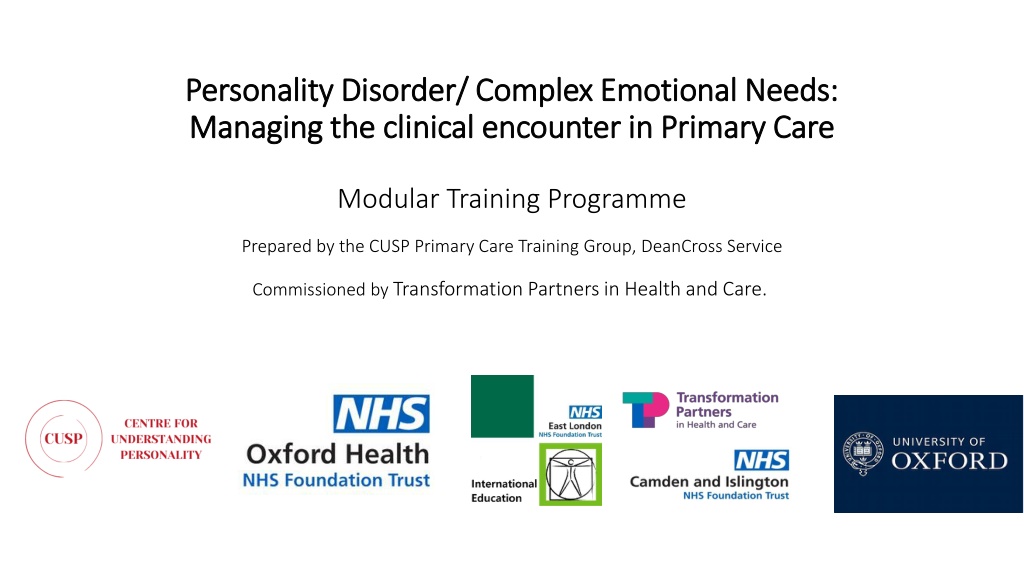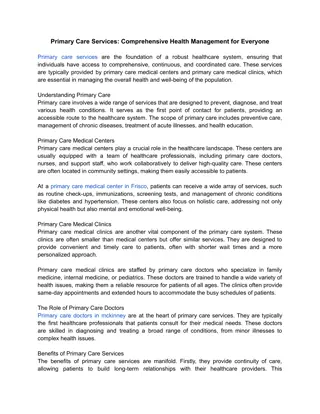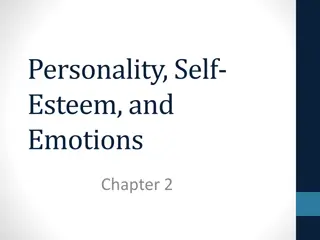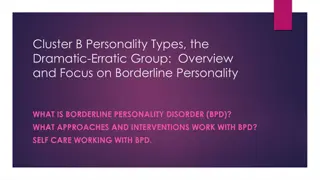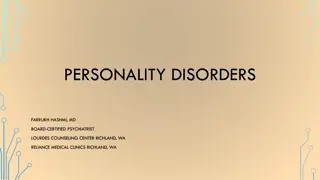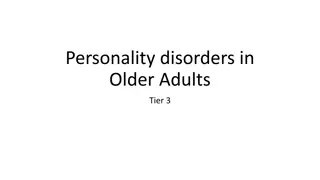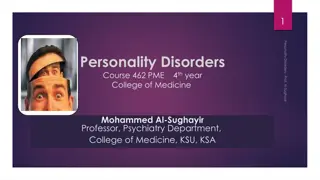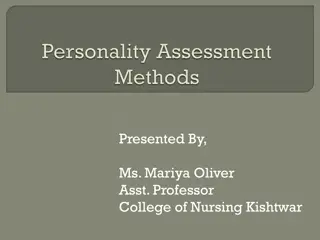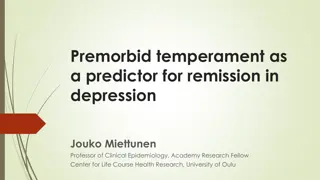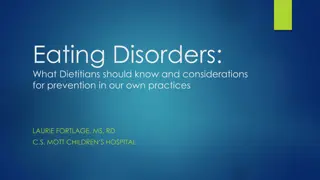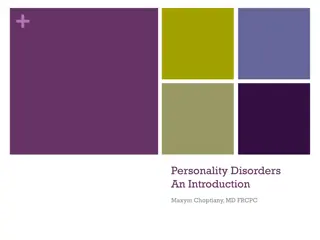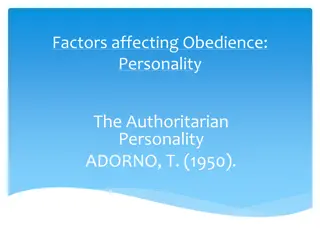Understanding Personality Disorders and Complex Emotional Needs in Primary Care
This training program focuses on managing clinical encounters related to personality disorders and complex emotional needs in primary care settings. Modules cover developmental factors, building trusting relationships, and the biopsychosocial model's impact on attachment, trauma, and mentalizing. Attachment theory and mentalizing play crucial roles in understanding early relationships and their influence on mental health. The program aims to enhance healthcare professionals' skills in addressing patients with personality disorders effectively.
Download Presentation

Please find below an Image/Link to download the presentation.
The content on the website is provided AS IS for your information and personal use only. It may not be sold, licensed, or shared on other websites without obtaining consent from the author. Download presentation by click this link. If you encounter any issues during the download, it is possible that the publisher has removed the file from their server.
E N D
Presentation Transcript
Personality Disorder/ Complex Emotional Needs: Personality Disorder/ Complex Emotional Needs: Managing the clinical encounter in Primary Care Managing the clinical encounter in Primary Care Modular Training Programme Prepared by the CUSP Primary Care Training Group, DeanCross Service Commissioned by Transformation Partners in Health and Care.
Outline of Outline of modules modules Module 1: Introduction to personality disorder /complex emotional needs Module 2: Developmental factors (what may lead to a diagnosis?) early life experiences Module 3: Vignettes pre-requisite for module 4 Module 4: Skills for building a trusting relationships
Module 2: Module 2: Developmental factors (what may lead to a diagnosis?) Aims of this module: Considering why someone may attract this diagnosis early life experiences (attachment, adverse childhood experiences and how this affects relating to others). Talking about personality disorder with your patient
Biological Psychological Gender Self-esteem/self-worth Neurochemistry Attitudes Genetic vulnerability Beliefs Stress response Coping skills Developmental: Developmental: Biopsychosocial Biopsychosocial Model Model Temperament Response to trauma Physical health Social Disability Socioeconomic status Education Peers Family background Social support Political circumstances
Consider how the biopsychosocial model may link to the interaction between attachment, trauma and mentalizing capacity. Developmental factors: Moving away from what s wrong to what happened to you Attachment Trauma Mentalizing
Attachment & Mentalizing Attachment & Mentalizing Our earliest relationships with primary care givers is where we learn to understand our own thoughts and feelings and the mind and intentions of others (mentalizing). John Bowlby describes attachment as a lasting psychological connectedness between human beings . Bowlby believed that the earliest bonds formed by children and their caregivers have a tremendous impact that continue throughout life. Ref: Bowlby, J. (1958) The nature of the child s tie to his mother, The International Journal of Psychoanalysis, 39, 350-373.
Attachment Attachment Prolonged difficulties in relationships with early care givers may lead to an insecure attachment (eg a disorganised or ambivalent or avoidant attachment style), which is associated with Personality Disorder
Trauma and Adverse Childhood Experiences Trauma and Adverse Childhood Experiences Trauma and Adverse Childhood Experiences (ACEs) have lasting psychological and physical impacts Cumulative ACEs (4+) lead to increased risk Wales ACEs video: https://www.youtube.com/watch?v=YiMjTzCnbNQ (6 minutes) Support in childhood/adulthood, along with psychoeducation can change outcomes for the better
Source: https://www.psychology-emotionregulation.ca/dialectical-behaviour-therapy-dbt/
